Jan 21, 2025
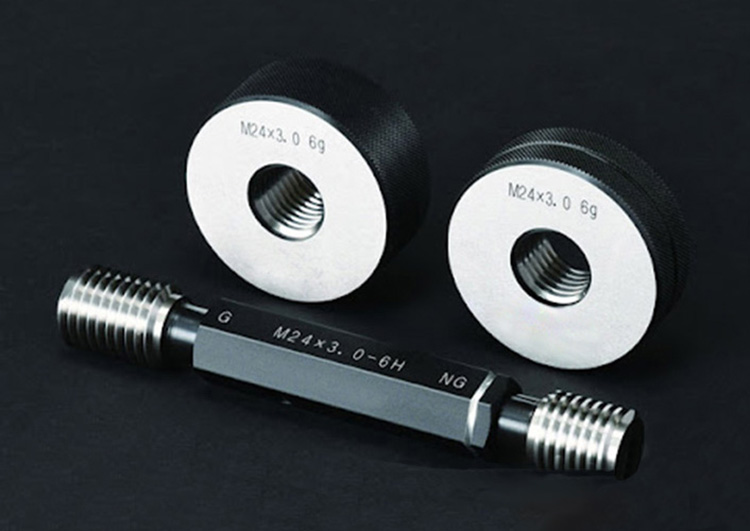
Pipe threads are widely used in the industrial field. Whether the thread connection is qualified or not directly affects the assembly performance and safety of the product.
Various thread standards specify different thread parameters, including thread height, pitch, thread angle, major diameter, minor diameter, tolerance grade, and more. So, how can you identify which type of thread you are using among many models? How do you determine if the thread you are using is qualified?
To understand the standards, characteristics and how to determine pipe thread size, please refer to the article What Is Pipe Thread?
There are various ways to measure threads, including using thread gauges, thread micrometers, the three-pin method, imaging methods, and coordinate measurement. Here, we will mainly discuss the thread gauge measurement method.
A thread gauge is a tool used to check whether the size and shape of a thread meet the required standards. It is commonly used to verify the outer diameter, inner diameter, pitch, and thread angle to ensure the thread will fit properly and meet design specifications. Thread gauges are widely used in mechanical processing, pipe installation, quality control, and other fields.
1.Ring Gauge (Male Thread Gauge)
The external thread gauge is used to measure the size of external threads, checking whether the diameter, pitch, and shape meet the standards.
It typically consists of a GO gauge and a NO-GO gauge. During use, the workpiece to be measured is screwed into the thread gauge. If it passes the GO gauge but does not pass the NO-GO gauge, the thread is considered qualified.
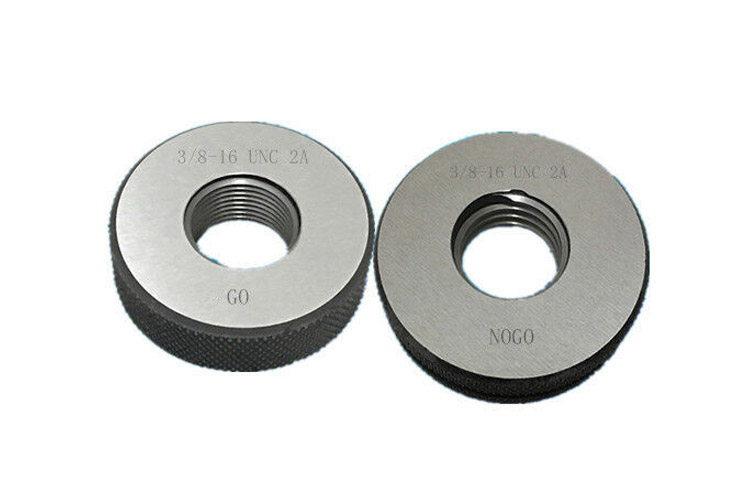
There is another type of Ring Gauge that integrates both the go and no-go gauges, has one or more reference planes.When used, the workpiece to be tested is screwed into the threaded gauge once to determine if it is qualified.
2.Plug Gauge ( Female Thread Gauge)
The internal thread gauge is used to measure the size of internal threads. It usually integrates the GO and NO-GO gauges on a cylindrical body, with one end being the GO gauge and the other end being the NO-GO gauge.
During use, the cylindrical gauge is screwed into the workpiece from both ends. If the GO end fully screws in and the NO-GO end does not, the thread is considered qualified.

There is another type of Plug Gauge that integrates both the go and no-go gauges, has one or more reference planes. When used, the Plug Gauge is inserted into the hole to be tested once to determine if the thread is qualified.
3.Pitch Gauge
The pitch gauge is used to measure the pitch of the thread, which is the distance between two adjacent thread peaks.
It is composed of a series of individual metal plates, each having a specific tooth profile. The method of use is similar to unlocking a lock — the user selects the gauge plate that fits with the workpiece, and the pitch of the thread is determined by reading the corresponding scale on the gauge.
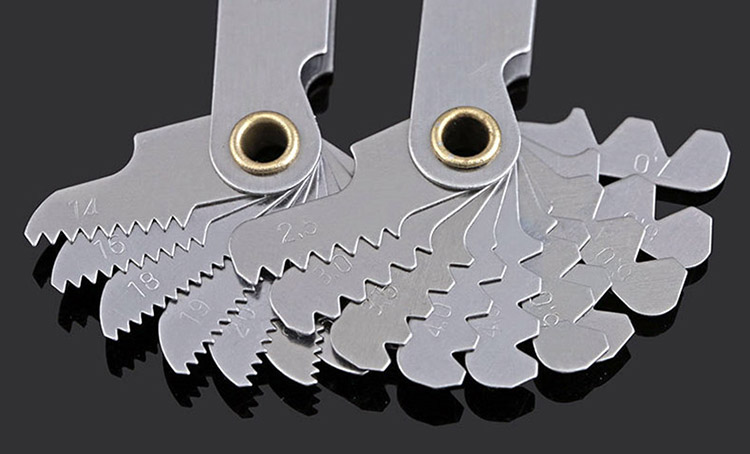
First, confirm the approximate pipe thread size and standard of the thread (e.g., 1/4”NPT thread). Then, choose the corresponding Ring Gauge. Screw the workpiece into the GO and NO-GO gauges. Only when the workpiece passes the GO gauge completely and does not pass the NO-GO gauge is the thread considered qualified.
If the second type of Ring Gauge is used, the workpiece to be tested is screwed into the threaded gauge, and the relationship between its top surface and the reference plane of the gauge is observed. If it exceeds the upper or lower limit, the thread is considered unqualified; otherwise, it is considered qualified. If the thread exactly aligns with the '0' plane, the thread is considered optimal.
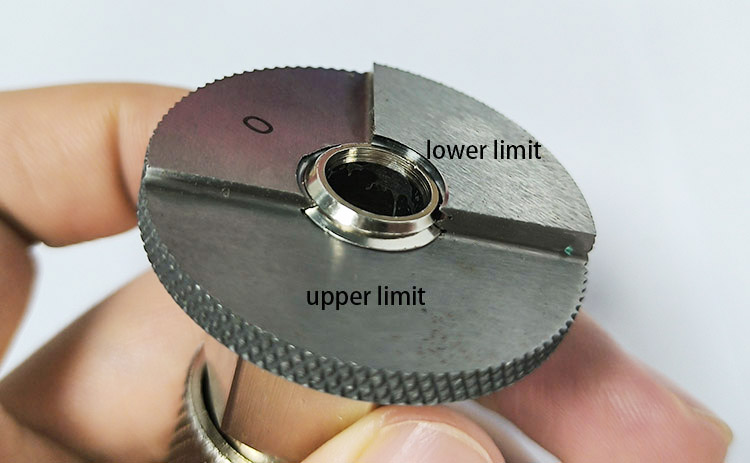
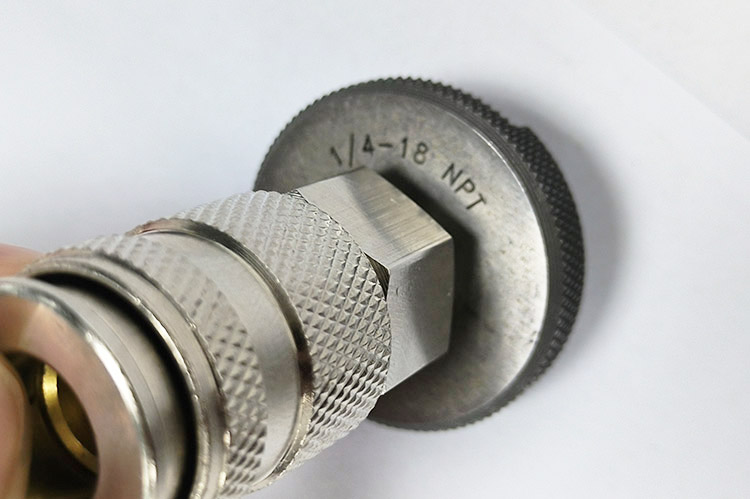
First, confirm the approximate pipe thread dimension and standard of the thread (e.g., 1/4”NPT thread). Then, select the corresponding Plug Gauge. Screw the gauge into the workpiece from both ends. Only when the GO gauge fully screws in and the NO-GO gauge cannot screw in completely is the thread considered qualified.
If the second type of Plug Gauge is used, the threaded gauge is screwed into the hole to be tested, and the relationship between the top of the hole and the reference plane of the gauge is observed. If the reference plane aligns exactly with the top of the hole, the thread is considered optimal; conversely, the greater the deviation, the lower the thread's accuracy.
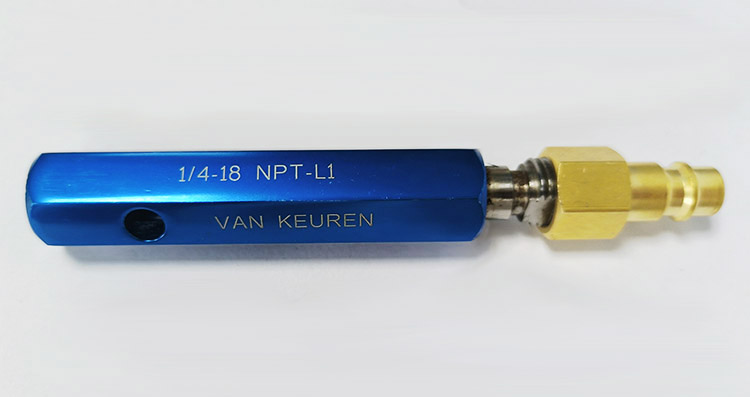
Thread gauge measurement follows the Taylor Principle, which ensures that the measurement can only meet the minimum requirements of thread inspection.
The advantages of this inspection method include low cost, easy maintenance, simple and efficient measurement, quick usage, and very low technical requirements for the user. It is particularly suitable for routine measurement of threads by users and for rapid inspection on mass production lines.
However, its shortcomings include that it only verifies whether a thread is qualified and does not provide detailed thread parameters. For non-qualified threads, it cannot offer correction suggestions. Also, for each type of thread, a specific set of corresponding gauges is needed.
Fokca is a professional manufacturer specializing in various pneumatic components. We offer a variety of different sizes of fittings, tubes, and cylinder accessories, with multiple thread types available for selection. If you have any needs, please visit our Product page for more information.
You can also visit our Blog page, where we provide a series of more detailed and comprehensive articles, images, and videos to help you better understand pipe threads and pneumatic tube fittings.
You May Interest In
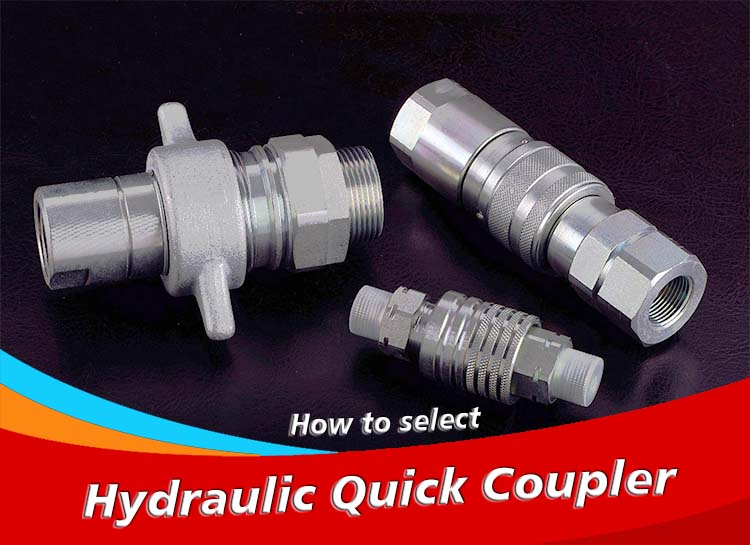
Feb 24, 2025 Blog
How to Identify Hydraulic Quick Couplers?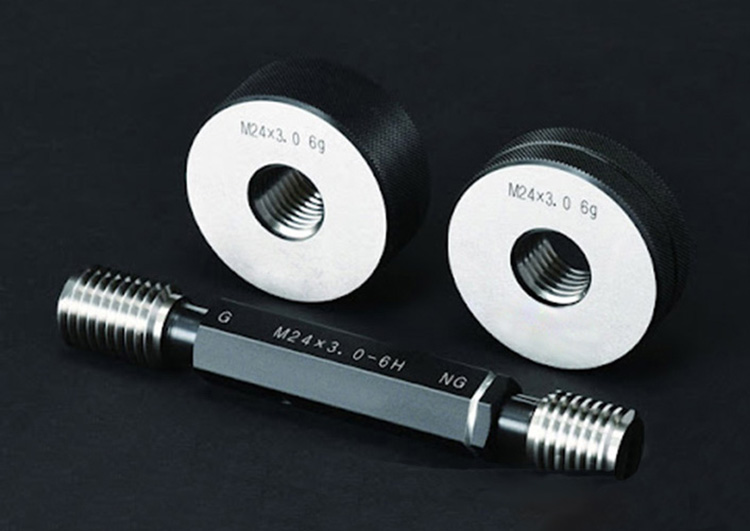
Jan 21, 2025 Blog
How to Measure Pipe Thread?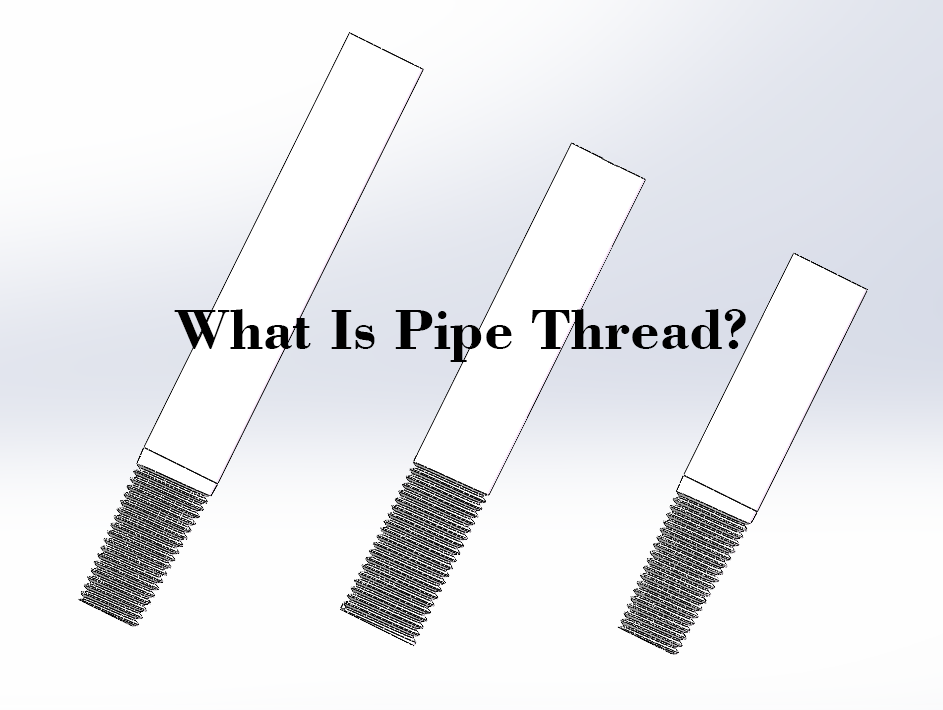
Jan 16, 2025 Blog
What Is Pipe thread?
Dec 04, 2024 Blog
Application Of Tube Fitting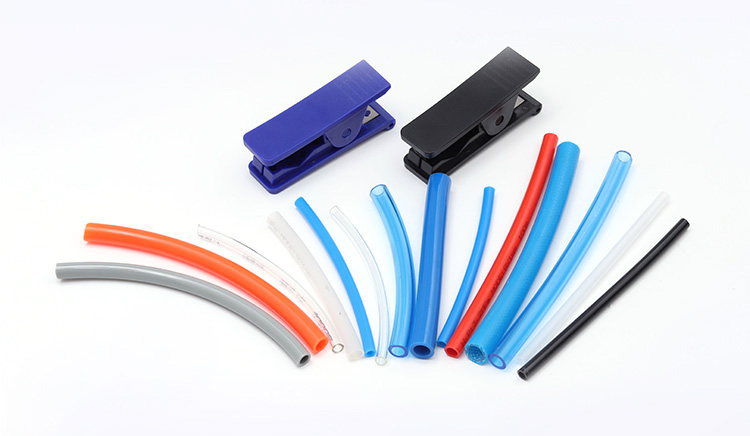
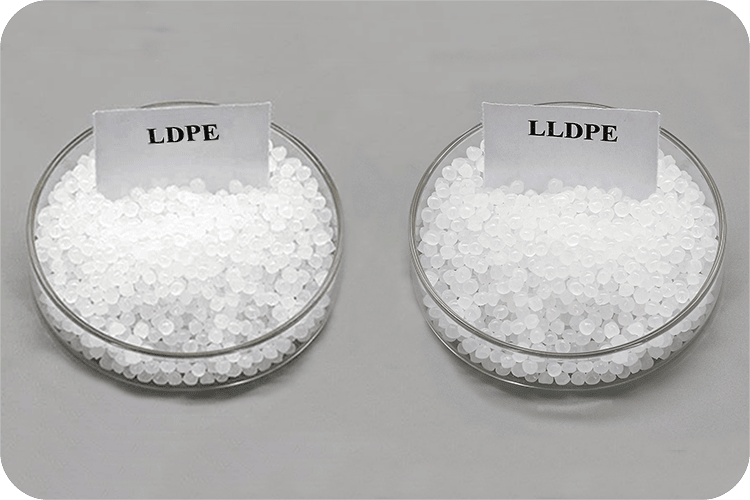
Jun 26, 2023 Blog
What Is The Difference Between LLDPE And LDPE?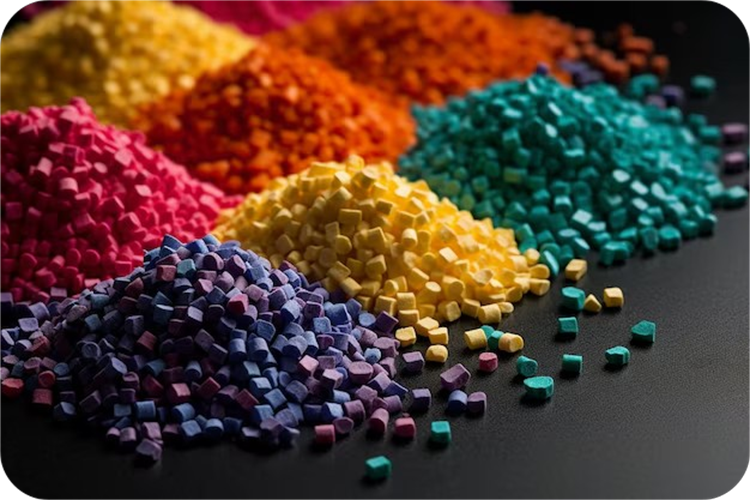
Jan 17, 2023 Blog
What Are The Classification Of Plastics?Links: www.fescolo.com(Pneumatic)
FOKCA ©1998-2025 All Rights Reserved Sitemap